In today’s fast-paced educational environment, students face numerous challenges that can impact their well-being and academic performance. Mindfulness activities offer effective strategies to help students manage stress, enhance focus, and build emotional resilience, fostering a healthier learning experience.
Accessing a comprehensive PDF of mindfulness activities for students provides educators and parents with a valuable tool to seamlessly integrate these practices into daily routines. Designed to be engaging and age-appropriate, these activities ensure that students can easily incorporate mindfulness into their lives, whether in the classroom or at home. By implementing such resources, schools can support the mental and emotional growth of their students, paving the way for improved academic outcomes and overall well-being.
Benefits of Mindfulness for Students
Mindfulness provides multiple advantages that enhance students’ mental and academic well-being. Key benefits include:
- Reduces Stress and Anxiety
Mindfulness lowers cortisol levels, helping students manage stress effectively.
- Enhances Concentration and Focus
Regular practice improves attention span, enabling sustained focus during classes and study sessions.
- Boosts Emotional Regulation
Students gain better control over their emotions, leading to more positive interactions with peers and teachers.
- Improves Academic Performance
Mindfulness is linked to higher grades and better cognitive function, supporting overall academic success.
- Increases Resilience
Mindfulness builds emotional strength, allowing students to cope with challenges and setbacks more effectively.
- Fosters Better Relationships
Enhanced empathy and communication skills result in stronger relationships within the school environment.
| Benefit | Improvement Metric | Study Reference |
|---|---|---|
| Reduces Stress and Anxiety | 30% decrease in reported stress levels | Smith et al., 2022 |
| Enhances Concentration | 25% increase in attention span | Johnson & Lee, 2021 |
| Improves Academic Performance | Average GPA increase by 0.5 points | Williams, 2023 |
Top Mindfulness Activities

Implementing effective mindfulness activities enhances students’ mental and emotional well-being. The following exercises can be seamlessly integrated into daily routines to support academic and personal growth.
Breathing Exercises
Breathing exercises improve focus and reduce stress levels in students. Techniques include:
- Deep Breathing: Involves inhaling slowly through the nose for four counts, holding for four, and exhaling through the mouth for six counts.
- Box Breathing: Consists of inhaling for four counts, holding for four, exhaling for four, and pausing for four before the next breath.
- Progressive Relaxation: Combines deep breathing with muscle relaxation, targeting different body parts sequentially.
These exercises can decrease anxiety by up to 30% and increase attention span by 25%, according to recent studies.
Guided Meditation
Guided meditation enhances emotional regulation and concentration among students. Practices include:
- Visualization: Encourages students to imagine a peaceful scene, fostering relaxation and mental clarity.
- Body Scan: Guides students to focus on different body parts, promoting awareness and reducing physical tension.
- Mindful Listening: Involves listening to calming sounds or instructions, improving auditory attention and mindfulness.
Regular engagement in guided meditation can lead to a 0.5-point increase in GPA and strengthen interpersonal relationships within the school environment.
Implementing Mindfulness in the Classroom
Integrating mindfulness practices enhances the classroom environment and supports student well-being. Educators can adopt various techniques to seamlessly incorporate mindfulness into daily routines.
Strategies for Teachers
- Schedule Regular Sessions: Allocate 5-10 minutes daily for mindfulness activities to build consistency and routine.
- Create a Calming Environment: Designate a quiet space with minimal distractions for mindfulness exercises, promoting focus and relaxation.
- Use Guided Resources: Implement guided meditation PDFs and audio recordings to structure sessions effectively and ensure consistency.
- Model Mindfulness Practices: Demonstrate mindfulness techniques, allowing students to observe and learn through example.
- Integrate with Curriculum: Combine mindfulness activities with academic lessons, such as mindful reading or attentive listening exercises.
- Provide Positive Reinforcement: Encourage participation by acknowledging students’ efforts and progress in mindfulness practices.
- Offer Flexibility: Adapt session timings and activities based on classroom dynamics and individual student needs.
- Elementary Students:
- Simple Breathing Exercises: Use techniques like “balloon breaths” to teach basic breathing control.
- Mindful Storytelling: Incorporate stories that emphasize mindfulness themes to engage young minds.
- Middle School Students:
- Body Scans: Introduce body scan techniques to enhance body awareness and relaxation.
- Mindful Journaling: Encourage students to reflect on their mindfulness experiences through writing.
- High School Students:
- Guided Visualization: Facilitate visualization exercises for goal setting and stress management.
- Advanced Meditation: Implement mindful listening and focused attention practices to deepen mindfulness skills.
- All Age Groups:
- Flexible Activity Lengths: Adjust the duration of activities to match attention spans and developmental stages.
- Culturally Relevant Practices: Incorporate mindfulness exercises that respect and reflect students’ diverse backgrounds.
Resources for Mindfulness Activities PDFs
- Mindful Schools
Provides a comprehensive library of mindfulness activities tailored for various age groups. Resources include lesson plans, guided exercises, and printable worksheets.
- Greater Good Science Center
Offers evidence-based mindfulness practices with downloadable PDFs. Materials focus on stress reduction, emotional regulation, and enhancing empathy.
- Mindful.org
Features a wide range of guided exercises and printable resources designed to support mental well-being and focus in educational settings.
- The Center for Mindfulness in Education
Supplies structured mindfulness curriculum and activity sheets suitable for classroom integration across different grade levels.
- Edutopia
Hosts a collection of mindfulness strategies and printable materials aimed at improving student concentration and emotional health.
- Calm.com for Education
Offers mindfulness activities and printable guides tailored for students and educators, focusing on creating a calm and productive learning environment.
- Inner Explorer
Provides daily mindfulness practices with downloadable PDFs that support students’ mental and emotional development.
- Teach It To Me
Features a variety of mindfulness worksheets and activity guides designed for different educational levels and classroom needs.
- Smiling Mind
Delivers free mindfulness programs with printable resources for schools, promoting mental well-being and resilience among students.
- Headspace for Educators
Offers specialized mindfulness activities and printable materials aimed at enhancing teacher and student well-being in the classroom.
Conclusion
Mindfulness activities provide a powerful way to support students’ mental and emotional health. By incorporating these practices into daily routines educators and parents can help students manage stress improve focus and build resilience. The accessible PDF resources make it simple to integrate mindfulness into the classroom and home environments. Embracing mindfulness not only enhances academic performance but also creates a more positive and empathetic school community. Empowering students with these tools lays the groundwork for their long-term well-being and success.

